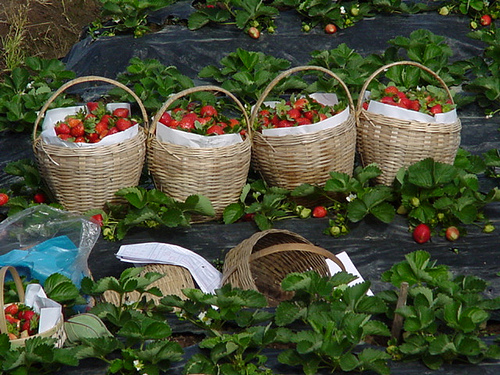A $2.5 million IFAD-funded project looks at ways for small farmers to help raise export so as to cut Philippines’ and ASEAN’s heavy import dependence that just benefits rich countries like Australia.

A project of the Southeast Asian Regional Center for Graduate Study & Research in Agriculture (SEARCA) and the International Fund for Agricultural Development (IFAD) aims to effectively integrate small farmers into the larger ASEAN market.
It is called Agricultural Transformation & Market Integration (ATMI).
In an ATMI inception program hosted by SEARCA, the Philippines Statistics Authority (PSA) showed that the Philippines imports agricultural goods substantially from Australia, United States, Europe, and ASEAN more than it exports.
This creates more favor for farmers abroad as Philippines imported $555 million worth of goods from Australia but exported only $69 million in 2016, creating a negative balance of trade of $486 million.
From the US, it imported in 2016 $2.54 billion worth of goods as against export of only $1.334 billion with negative BOT of $1.208 billion.
Even from ASEAN (Association of Southeast Asian Nations), it imported $3.837 billion and exported only $525 million in 2016. From the rest of the world, Philippines imported $4.036 million worth of farm goods, exporting only $1.684 billion.
Despite this grim situation, there appears to be an opportunity for Philippines’ farm export growth. Coconut oil export grew from $1.129 billion in 2015 to $1.152 million in 2016. Likewise, export of pineapple and its products expanded from $574 million in 2015 to $711 million in 2016. Export of fresh bananas rose from $658 million in 2015 to $730 million in 2016.
The aim of ATMI is to encourage ASEAN nations to commonly address problems that hinder development.
It will largely be through improved policies, such as attractive investment policies, according to A. Kishore of International Food Policy Research Institute or IFPRI, also an ATMI implementor.
“(ATMI will enhance) cooperation among ASEAN states for food security and agricultural development through preparation of strategic programs in the areas of R&D, food safety and investment in food and agri-based industries,” said Kishore.
Kevin Chen, IFPRI senior research fellow, said the simultaneous development of industries sector (processing), services (logistics, marketing) are needed in transforming agriculture.
“Value chain development of the ‘post farmgate’ segment has been a dual revolution,” Chen said.
It means there is great progress in farming when small farmers are able to upgrade into processing, transporting and marketing their raw, fresh farm produce.
ATMI will identify value chains of agricultural goods and identify how farmers’ competitiveness can be raises. For instance, small farmers should be helped in credit in order to invest in trucks that will enable him to transport his own goods and raise his margin.
Chen said there are important stages of transformation experienced by countries that developed their farm sector. These will need government’s intervention through investment in infrastructure and research and development, among others. These are the stages:
· Wholesale/logistics segment: public-sector driven stage in the1960–1990s ? modernization stage driven by foreign direct investments (FDI) in the 2000s.
· Processing segment: divided into two competing lines in 1980s: 1) small and medium enterprises– grain mills and dairy, meat, fish, and produce processing; 2) large-scale plants mainly driven by FDI ? rapid consolidation afterwards due to regulations
· Retail segment: state-owned retail ventures ended up with privatization or dismantled since the 1970s ? “supermarket revolution” in the1990s and 2000s ? the era of E-commerce.
Very important, transformation needs government’s policy reforms in order to improve small farmers’ plight.
Land distribution for instance enables farmers to have thbe incentive to maximize farm production and buy or lease additional land areas.
Running a bigger farm area gives them economies of scale and makes them competitive. But policies are needed to enable land consolidation.
“Small farms are facing increasing disadvantages, including rapidly increasing wage rate, decline of production efficiency comparing to large farms, and difficulty of expanding farm size due to imperfection of land markets,” Chen said. (Growth Publishing for SEARCA).
For any questions or interview requests, please contact 0929-715-8669 (Growth Publishing for SEARCA).
